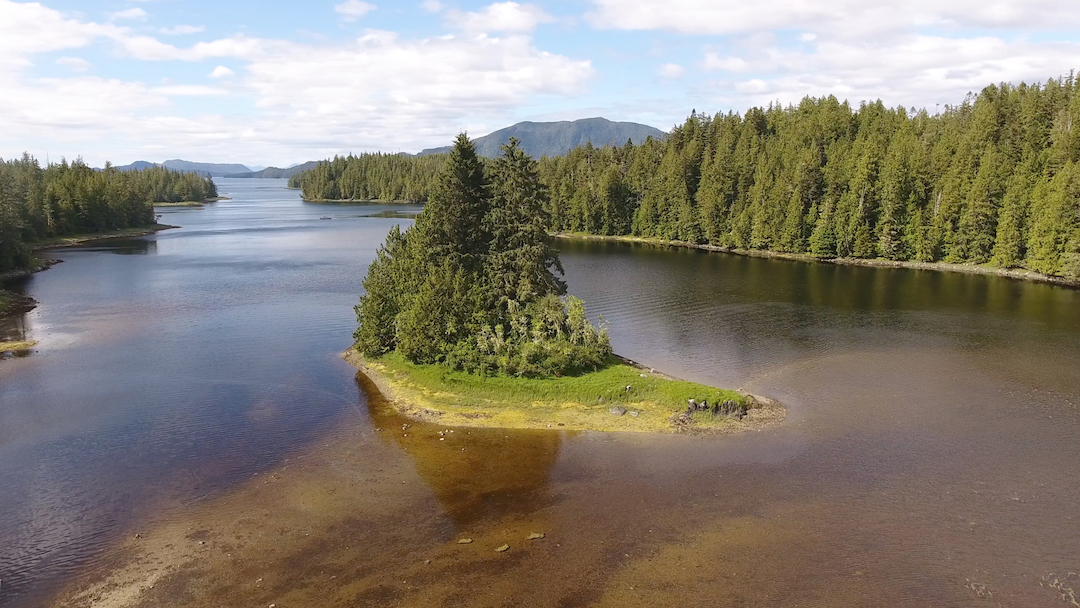While ancient settlements
are located throughout northern Hunter Island, the largest and oldest sites are concentrated in central Húy̓at. This large and protected bay offered an abundance and range of foods and other resources that could be tended through
gardening and other management practices.
A settlement was established in central Húy̓at by at least 6000 years ago. Over the millennia, this bustling settlement expanded to include a concentration of many houses – most built on artificially levelled ground – as well as lookouts, culturally modified trees, berry and tree gardens, intertidal clam and root gardens, and fish traps. The archaeological site that reflects this settlement is at least eight meters deep and about one hundred and fifty meters in extent. The core of the settlement is a large, terraced mound with at least nine subtle, rectangular depressions that mark the remains of ancient houses. The terraced mound sits at the base of and is visually framed by
M̓ṇ́sǧṃ́x̌λi;
this almost certainly enhanced the settlement’s prominence and importance in the past.

Three-dimensional model of the core of the central Húy̓at settlement outlining subtle depressions that mark the locations where at least nine ancient houses once stood.

The large, human-created terraced mound in the core of the Húy̓at settlement, with the depressions from at least nine ancient houses.

Island at the mouth of the central bay with terraced house platforms and defensive ramp. The top of the island afforded long-distance views out into the channel.
The C̓úṃqḷaqs story describes how Qáláguy̓uis - C̓úṃqḷaqs’ son who was a carver and a carpenter – made the first settlement in Húy̓at, at the place called T̓iy̓ású. In one version, shared by Udzistalis in 1920, Qáláguy̓uis built nine houses. In the version Udzistalis shared in 1895, Qáláguy̓uis built 11 houses in total.
As soon as daylight came in the morning, Qalaqoyewis [Qáláguy̓uis] went out. He stayed in the woods making nine small houses and a number of canoes. He carved dead alder wood into images of men and women about half the size of a little finger. He put these into the small houses. One of the nine houses he carved so that the posts represented bears and men. This house was larger than the others and when he had finished his work it was late in the evening. After dark he carried the small houses out of the woods and put them down on the level ground east of his Mother’s house. He placed the largest house in the middle. It was intended for his Mother. Then he put four smaller houses on each side of the large one and he placed the carved images into the houses... (As told by Udzistalis to George Hunt in 1920; reproduced in “Bella Bella Tales”, Boas,1932)
Dating the Ancient Village


